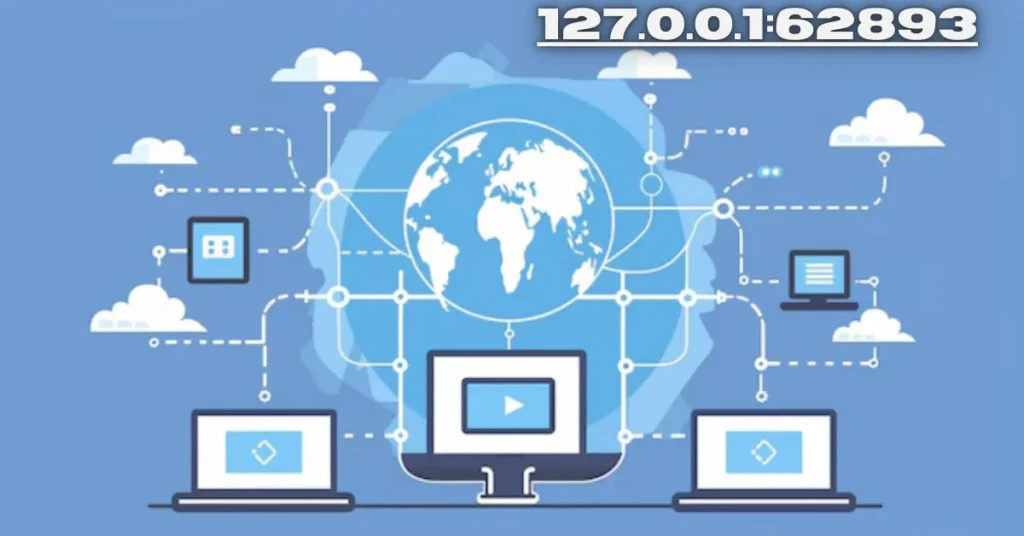When you hear the term “127.0.0.1:62893,” it might sound like a secret code or some tech jargon reserved for IT professionals. But fear not! This address is much more approachable than it seems, and understanding its ins and outs can help you troubleshoot a variety of common errors that may pop up during your online endeavors. Whether you’re a seasoned techie or just someone trying to navigate the digital landscape, getting familiar with this local IP address can save you time and frustration in the long run. Let’s dive into what 127.0.0.1:62893 really is and how to handle any hiccups along the way!
Understanding IP addresses
IP addresses are the backbone of internet communication. They function like mailing addresses for devices connected to a network, ensuring that data packets get to their intended destinations.
An IP address is composed of a series of numbers separated by periods in IPv4 format. For instance, 192.168.1.1 is a common private IP address used within local networks. This system allows every device—with unique identifiers—to communicate efficiently with one another.
There are two types of IP addresses: public and private. Public addresses connect you to the wider internet, while private ones facilitate internal communication within your home or organization.
Understanding these concepts helps demystify how information travels through the web and why certain errors may arise during this process. As you explore further into specific addresses like 127.0.0.1:62893, grasping the fundamentals of IPs will enhance your troubleshooting skills significantly.
What is 127.0.0.1:62893?
The address 127.0.0.1 is known as the loopback IP address, a special address used by your computer to communicate with itself. It’s often referred to as “localhost.”
When you see 127.0.0.1:62893, the number after the colon indicates a specific port on that local machine—port 62893 in this case.
Ports are like doors through which data enters and exits your device for different applications or services running on it. Each service can use its own unique port number.
This particular combination allows developers and users to test network applications without needing an active internet connection or external server involvement.
Understanding this concept is key for anyone diving into networking or troubleshooting related issues on their systems.
Common errors associated with 127.0.0.1:62893
When working with 127.0.0.1:62893, several common errors can disrupt your experience. One frequent issue is the “Connection Refused” error. This often occurs when an application isn’t running on that specific port.
Another problem is a timeout error, which may indicate network configuration issues or firewall settings blocking access to the port.
You might also encounter “Address Already in Use.” This means another service is occupying 62893, preventing new connections from establishing properly.
DNS resolution problems can arise too, leading to incorrect routing of requests intended for this local address.
Understanding these errors helps you troubleshoot and maintain smoother operations within your system’s networking environment.
How to troubleshoot common errors
When facing issues with 127.0.0.1:62893, the first step is to verify your connection settings. A simple restart of your application or service can often resolve temporary glitches.
Next, check firewall and security software settings. Sometimes, they block local connections unintentionally. Making sure that exceptions are added for your applications might do the trick.
If errors persist, inspect configuration files for any typos or misconfigurations. Even a small oversight can lead to significant issues in connectivity.
Using command line tools like `ping` and `traceroute` can help diagnose deeper networking problems as well. They provide insight into where exactly the connection breaks down.
Ensure you’re using compatible versions of related software and services since mismatches can trigger unexpected behavior on localhost ports like 62893.
Tips for preventing errors associated with 127.0.0.1:62893
To prevent errors linked to 127.0.0.1:62893, start by ensuring your firewall settings are configured correctly. Misconfigured firewalls can block local connections, leading to frustrating issues.
Regularly update your software and applications that rely on this IP address. Keeping everything current helps eliminate compatibility problems that may arise from outdated versions.
Monitor resource usage on your machine as well. High CPU or memory consumption can affect performance and connectivity with localhost services.
Consider using a dedicated tool for managing network configurations as well. This can help you identify anomalies before they escalate into significant problems.
Maintain clear documentation of any changes made in system settings or application configurations related to 127.0.0.1:62893 for future reference and troubleshooting ease.
The importance of regularly checking and updating your IP address
Regularly checking and updating your IP address is crucial for maintaining optimal network performance. An outdated or incorrect IP can lead to connectivity issues, making it difficult to access services or websites.
Monitoring your IP address ensures that you are aware of any changes in your network configuration. This awareness helps in troubleshooting problems swiftly when they arise, saving time and frustration.
Moreover, an updated IP address can enhance security. Cyber threats often exploit static addresses that remain unchanged for long periods. By refreshing your IP regularly, you reduce the risk of unauthorized access.
Keeping track of changes in your IP setup allows you to stay compliant with various online platforms that may require current information for account verification or service functionality. Staying proactive is key to a seamless internet experience.
Conclusion
Navigating the world of IP addresses can initially seem daunting, but understanding the basics is essential for effective troubleshooting. The specific address 127.0.0.1:62893 often comes into play in various networking scenarios, primarily serving as a loopback interface for local testing.
Common errors associated with this address can disrupt your workflow or even pose security risks if not addressed promptly. Learning how to troubleshoot these issues will save time and frustration down the line. With careful attention to detail and proactive measures, you can minimize disruptions caused by errors linked to 127.0.0.1:62893.
Regular monitoring and updating of your IP settings are vital steps that contribute significantly to network stability and performance optimization. Keeping abreast of potential changes ensures that you stay one step ahead of any issues before they escalate.
Understanding and addressing problems related to 127.0.0.1:62893 not only enhances your technical skills but also empowers you to maintain a smoother digital experience overall.
FAQs
What is “127.0.0.1:62893”?
127.0.0.1:62893 is a loopback IP address used by your computer to communicate with itself, where 62893 represents a specific port for local applications.
Why is 127.0.0.1 known as “localhost”?
It is called “localhost” because it allows your computer to refer to itself, facilitating local testing without needing an external network.
What common errors can occur with 127.0.0.1:62893?
Common errors include “Connection Refused,” timeout errors, “Address Already in Use,” and DNS resolution issues, often due to misconfigurations or running applications.
How can I troubleshoot issues with 127.0.0.1:62893?
Verify connection settings, check firewall configurations, restart applications, and use command-line tools like ping or traceroute to diagnose issues.
Why is it important to regularly check my IP address?
Regularly checking your IP address helps maintain network performance, prevents connectivity issues, enhances security, and ensures compliance with online services.







